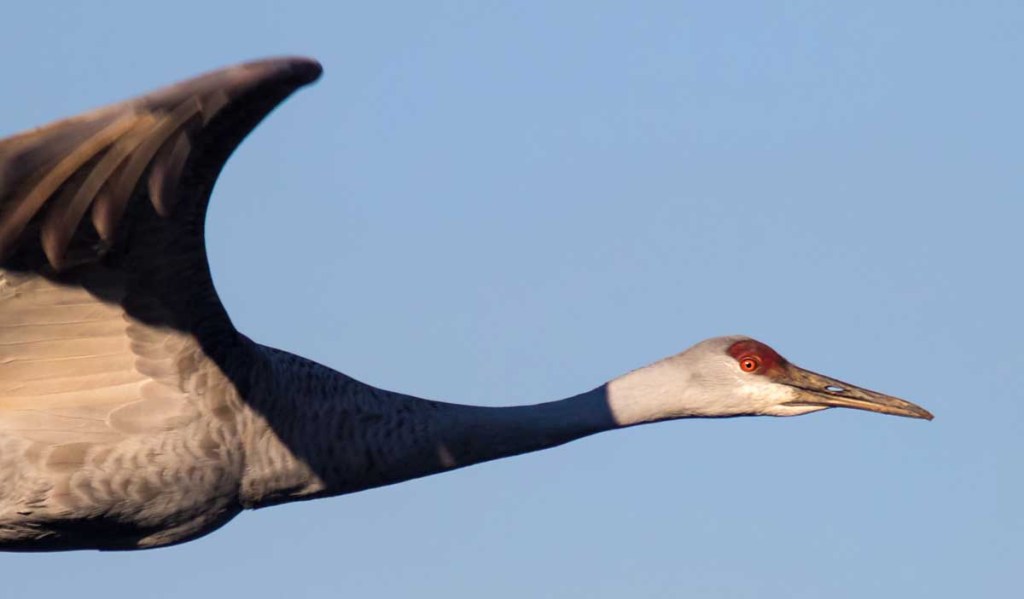Crane Hill: The birds moved on, but the name remains
Published 4:45 am Thursday, June 16, 2022

- Sandhill Crane at Wheeler National Wildlife Refuge.
Crane Hill was founded in 1806, and as the story goes, it was named after a flock of sandhill cranes that once roosted on a hill near Mt. Zion Road in Cullman County.
Before the Black Warrior River was dammed to make Lewis Smith Lake in 1961, the gradual banks of the river would have provided the two North American crane species — the sandhill crane and the endangered whooping crane — with an ideal wintering habitat. The swampy terrain along the river would have provided ample food and made for excellent roosting spots from predators. Because those shallow banks are now under water, though, it’s more likely that Crane Hill residents and other nearby lake dwellers see herons and egrets rather than cranes.
Trending
The sandhill and whooping cranes share traits that make them unique from other wetland birds. Both species have a red patch of skin on their forehead, as well as long legs, beaks, and necks. and they’re much bigger than any other long-legged wading birds found at the water’s edge.
Sandhill cranes, the smaller of the North American cranes, are between 3 ½ to 4 feet tall, while whooping cranes are North America’s tallest bird at 5 feet tall. Sandhill cranes are a medium-toned gray color all over their bodies with some rust-colored patches; the endangered whooping crane is a solid white — except for its black wing tips.
If neither size nor color can easily determine which species of bird you’re spying, whooping cranes have a black mark that extends past the edges of their mouths to make a “mustache” pattern. This pattern is completely unique to whooping cranes.
Both varieties of crane are large, migratory wading birds that inhabit wetlands. They are only in Alabama from late October through early March. Sandhill cranes form large flocks throughout their wintering season, while whooping cranes remain more solitary. Both crane species currently fall short of stopping in Cullman.
It’s possible, though, for cranes to be seen flying over Cullman on their way to other wintering areas. But there are no longer enough wetland habitats around Cullman in present times to sustain a flock throughout the winter. If you would like to see a Sandhill crane or the endangered whooping crane in the wild, the best place to view them is a short drive north at the Wheeler National Wildlife Refuge in Decatur. The wetlands, consistent food sources, and federal protections that the refuge provide are invaluable to these birds and keep them coming back every year.
Cranes are considered habitat specialists because they rely on wetlands to thrive in the wild. Wetlands provide cranes with water, shelter, space, and food. Their preferred foods found around Wheeler National Wildlife Refuge are insects, freshwater snails, snakes, frogs, berries, roots of grasses, and leftover grain crops. Sandhill cranes are less dependent on wetlands than whooping cranes and are often seen foraging in old agricultural fields.
Trending
Habitat loss still remains a threat to the survival of the whooping crane — the rarest crane species in the world. With only around 800 whooping cranes alive worldwide today, it is more important than ever that people protect the spaces where these cranes dance.
If you wish to see these birds at Wheeler National Wildlife Refuge, please note that the visitor center and observation building will be closed until Oct. 31 of this year for renovations. Call ahead to learn which areas of the refuge will be open during your visit. If you would like to help protect the whooping crane, the best way to do so is to learn more about them. You can learn more about cranes or report any banded crane sightings at www.savingcranes.org.





